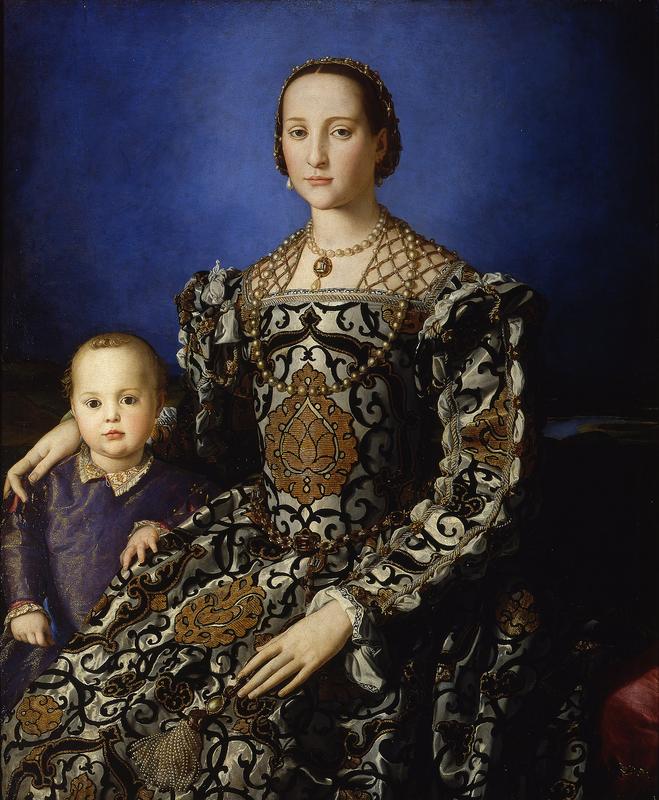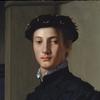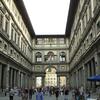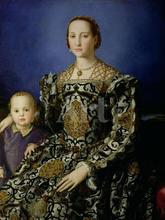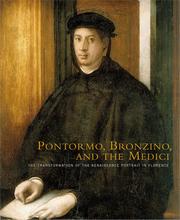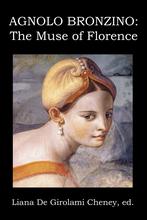More about Portrait of Eleonora di Toledo with her son Giovanni
- All
- Info
- Shop

Contributor
What could be sweeter than the perfect portrait of a mother and child like Cosimo's Eleanora di Toledo with Her Son Giovanni de' Medici?
Generally, almost nothing. In the case of Eleonora and her son, however, just about anything up to and including a portrait of an actual corpse could be sweeter. Instead of Virgin and Child glimmering with hope, bathed in the golden rays of heaven, we have a halo of deep blue that radiates out from behind Eleonora, just reaching her son, Giovanni, the heir to the Medici dynasty. In this portrait, the gold is real, and Eleonora is covered in it.
This, the first portrait of the ruler’s heir, was a declaration to the world that the security of the future of Florence was safely in the hands of their dead-eyed offspring. This braggardly vehicle of propaganda meant to reassure the masses that all was well in the hands of the Medici ultimately fell short in the prediction department. Both Giovanni and his mother, Eleonora, would die from malaria in 1562.
The gold, jewels, and pearls that adorn the Duchess, and to a much lesser extent, Giovanni, speak not of the promise of a heavenly afterlife, but of the Medici’s riches of the moment. As much statecraft as a statement of grandiloquence, the cold effect of those portrayed along with Eleonora’s perfectly dismissive half-smirk intentionally establishes a sense of “royal distance” between itself and anyone lucky enough to gaze adoringly at it. If we are to believe what we see, life as a Medici was a flawless state of being.
Somewhere in this painting is a lesson about how looks can be deceiving, how a tiny parasite can derail a dynasty and change the course of history, and how the shining face of youth is no guarantee of future success.
Featured Content
Here is what Wikipedia says about Portrait of Eleanor of Toledo
The Portrait of Eleanor of Toledo and Her Son is a painting by the Italian artist Agnolo di Cosimo, known as Bronzino, finished ca. 1545. One of his most famous works, it is housed in the Uffizi Gallery of Florence, Italy and is considered one of the preeminent examples of Mannerist portraiture. The painting depicts Eleanor of Toledo, the wife of Cosimo I de' Medici, Grand Duke of Tuscany, sitting with her hand resting on the shoulder of one of her sons. This gesture, as well as the pomegranate motif on her dress, referred to her role as mother. Eleanor wears a heavily brocaded dress with black arabesques. In this pose, she is depicted as the ideal woman of the Renaissance. The painting is the first known state-commissioned portrait to include the ruler's heir. By including the child, Cosimo wished to imply that his rule would bring stability to the duchy.
The child has been variously identified as being either Eleanor's son Francesco (born 1541), Giovanni (born 1543) or Garzia (born 1547). If the subject is the latter, the portrait should be dated around 1550–53, but the date is now generally assigned to c. 1545, based on an examination of the evolution of Bronzino's style, which would suggest Giovanni.
The portrait has been called "cold", reflecting the sober formality of Eleanor's native Spanish Court, without the warmth typically expected of a portrait of mother and child. Such distancing is typical of the Mannerist school's rejection of naturalism. Conversely, Eleanor's gown of elaborate brocaded velvet, with its massed bouclé effects of gold weft loops in the style called riccio sopra riccio (loop over loop), is painstakingly replicated. The painting is perhaps an advertisement for the Florentine silk industry, which had fallen in popularity in the first difficult years of the sixteenth century and was revived in the reign of Cosimo I. The precious golden belt, decorated with jewels and beads with a tassel, may have been made by the goldsmith Benvenuto Cellini.
Check out the full Wikipedia article about Portrait of Eleanor of Toledo

